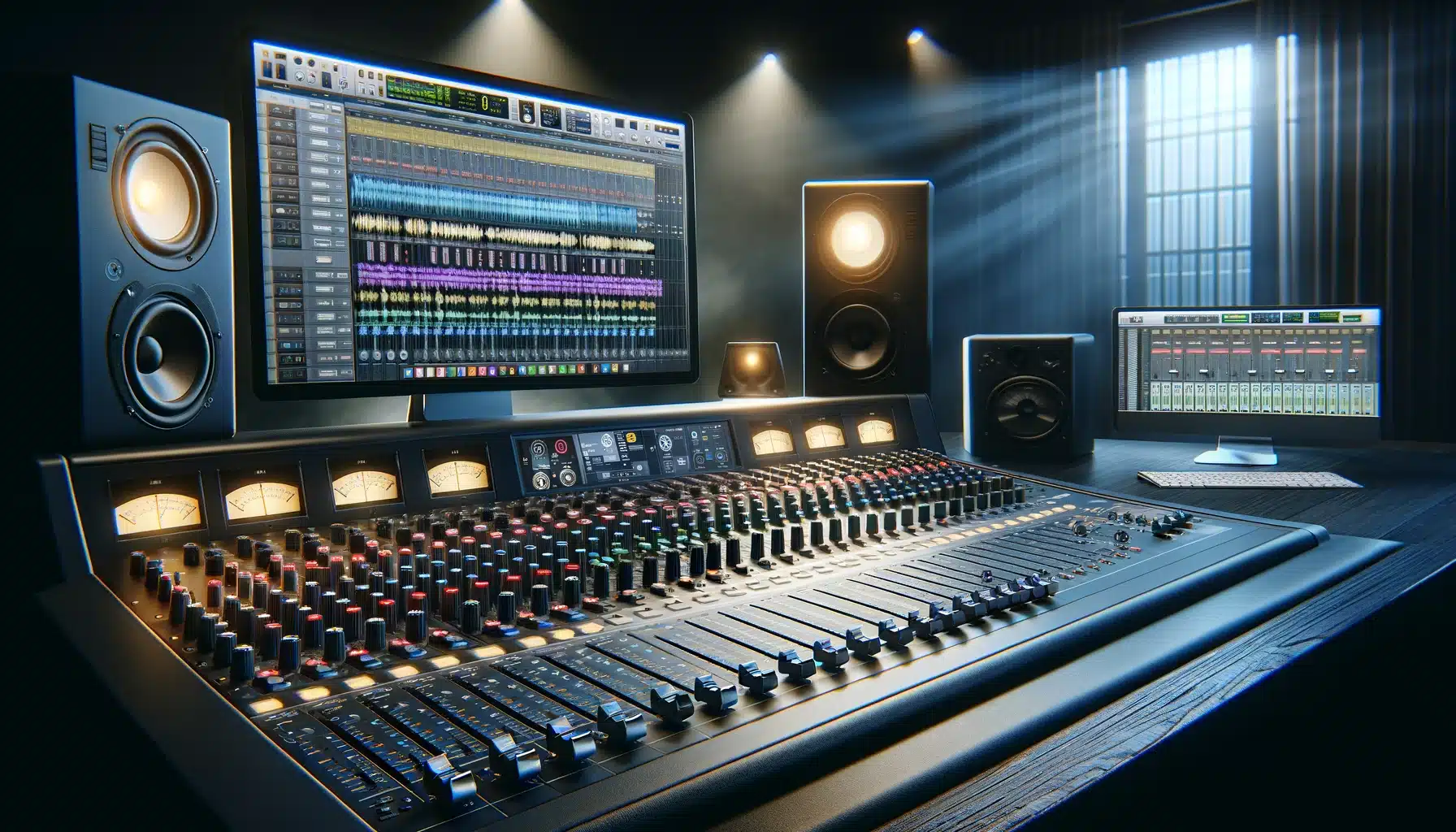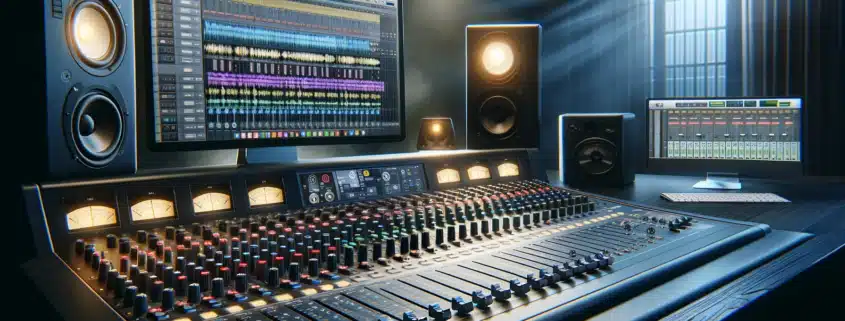20 Quick Tips on Pop Mixing
- Author Profile
- Recent posts
Pianist, Composer, Arranger, Sound Engineer, Writer, Blogger
Alessandro Fois is a musician, composer, pianist, arranger and sound engineer. Since 2018, he has also been a writer, blogger and webmaster. He currently resides in Ivrea (Turin) where, in addition to the above activities, he manages Lycnos, studio for audio, video and web services, and the recording studio Glamour Recording Studio.
Dear friends of the Community, below you will find 20 small general tips on mixing, written by an expert in the field.
Like all summary reductions of a subject, what is written below may make experts in the field 'smile' because of the inevitable simplifications and condensations that such a subject requires.
For each piece of advice, one would have to get lost in lengthy discussions on the how and why, pointing out the operating methods, details and exceptions that each 'art' requires for quality management of the mix.
However, this brief practical outline may help many of you to avoid the most common mistakes and to clarify in general terms the criteria for the approach, pointing the way forward.
As a professional, however, I believe that a quick read will be welcome and 'comforting' even for experienced operators.
But let us not linger any longer.
Quick tips for audio mixing of a pop song
- Before starting work, set the track (or mixer) controls to a neutral configuration (flat equalisation, pan-pot direction in the middle, etc.) and lower the faders of unused channels. Ensure that all unused aux sends are cleared and unused mixer channels are muted, further reducing the noise floor. Failure to perform these steps may result in unintended application of effects to tracks that do not need them or unwanted insertion of tracks in a bounce due to a routing button not being deactivated. It is also advisable to use a notepad and a removable tape with permanent marker to label the mixer channels (if using a physical console).
- Optimise gain settings not only for multitrack returns, but also for all effects sends and returns and for your external effects units. Also make sure that your recording system (in the case of analogue recording) receives the maximum sustainable level without excessive peaks in the signal; if you are using a 24-bit or more digital system, make sure that maximum signal peaks do not exceed -9 / -12 db. These precautions can greatly improve the clarity of your mix. If you plan to edit the recording, postpone any fade-outs to this stage and do not attempt to remove noise that precedes or follows the mix: it may be necessary to calibrate a digital denoiser, which requires a prior reading of a pure noise 'footprint'.
- Group parts of your mix, such as the drum set or backing vocals, into logical subsections so that you can control the overall level of these elements from a single mono or stereo fader, as appropriate (or from a pair of L and R faders, in the analogue mixer). This allows for smoother mix control, using fewer faders and maintaining pre-set proportions within the track group! It is important to remember that any source in a group must also have its effects directed towards the same group, otherwise the effects level will not vary as the group fader is changed.
- When you need to adjust levels in an analogue mixer, use a wax pencil to mark the fader settings, otherwise use the automations beforehand to set the basic levels of the various parts of each track (verse, chorus, etc.).
- Do not assume that your ears always perceive reality accurately. It is important to rest them before you start mixing and to continually refer to high quality (or at least reference) commercial recordings played through your monitoring system for a comparison indicator. This is crucial, especially if you use harmonic enhancers such as saturators and other enhancers, as it is easy to quickly become accustomed to the effects of over-emphasisation.
- Avoid abusing effects, especially reverb, as this can weigh down the recording and diminish the dynamic contrast needed to energise the mix. Generally, a drier sound appears more in the foreground, while sounds with strong reverb tend to recede into the depth of the soundstage. If you want a strong reverb on the lead vocal or a soloist in general, consider lengthening the reverb 'pre-delay' time so that the soloist stands out clearly from the background, remaining in the foreground despite his strong reverb.
- Avoid placing low sounds, such as bass drums or low instruments, on either side of the stereo soundstage, as these high-energy sounds need to be evenly distributed between the two stereo speakers for best results without overloading the mix. As a rule, very low sounds contain little or no directional information, although low sounds with a high content of medium and high harmonics may seem more directional.
- Although eq should be used right away to rough out the main defects of each source (such as resonances, deficiencies, gloominess, tonal imbalances, etc.), apart from these indispensable preliminary interventions avoid any final EQ and effects adjustments until you hear the complete mix. If you work on a single instrument in isolation, it may sound different when you add everything else. If you can avoid heavy EQ interventions, the result will probably sound more natural.
- Try to avoid too many instruments competing in the same band of the audio spectrum. The midrange is particularly at risk, so carefully select the sounds at source. Improve separation in the mix by using EQ to narrow the spectrum of the sound you are working on in a complementary way. Try to reduce low frequencies and occasionally eliminate excessive high frequencies. This is sometimes referred to as 'spectral mixing', where each sound or instrument occupies its own space in the audio spectrum. A classic example is the acoustic guitar in a rock mix, which can make the low-mid frequencies unwieldy and unclear. By significantly decreasing the low frequencies on the guitar, you can still obtain sufficient definition of its sound, but the mix will be much cleaner.
- Avoid over-equalising sounds, as they may sound unnatural, especially when you increase the intensity. If you limit your EQ to light cuts or boosts rather than using heavy variable averaging, you are less likely to end up with nasal, harsh or out-of-phase sounds. However, there are cases where more radical intervention is necessary, but in that case make sure the sound achieves a pleasant balance, even if different from the original, without creating acoustic monstrosities.
- If possible, solve problems by using subtractive rather than additive EQ. The human auditory system is less sensitive to EQ cuts than to increases. This is especially true if you are using an EQ of modest quality.
- Compress vocals to make them fit well into the mix. Few singers can maintain a level smooth enough to be successfully mixed without compression. soft knee compression tends to be less invasive, but if you want compression to add warmth and excitement to the sound, try an optical compressor or a hard knee model with a higher ratio than you normally use. Keep in mind that compression increases the noise floor (for every 1 dB of gain reduction, the noise floor in quiet passages increases by 1 dB) and heavy compression can also exaggerate vocal sibilance.
- From time to time, check the balance of the mix by listening through the studio or room door. This tends to highlight level imbalances more clearly than listening directly in front of the monitors. No one is quite sure why, but it works, probably because it creates an alternative perspective to listening on the 'focus', as well as a greater emotional and technical detachment from the processing.
- Do not monitor at excessively high volumes. High volume may make the sound and music seem more exciting, but the end listener is unlikely to listen at the same high level. If the sound suggests energy at low levels, you can be sure that it will increase with listening at high levels; conversely, if any track heard at high volume seems energetic, the same track heard at low volume may seem 'soft' and undynamic. Also consider that high monitoring levels, if prolonged, can temporarily alter your hearing perception and in some cases can lead to permanent hearing damage. It is good to check the mix at high volumes for short periods, but most of the time it is useful to try to mix at the level at which you think the music will eventually be heard. However, periodic listening at very high volumes is essential to assess the excess of bass, 'acid' sounds and reverberation in the mix, which are faults that are hardly noticeable at moderate volumes.
- Check your mixes with headphones as well as speakers. Headphones reveal small distortions and clicks that you might never hear with speakers. However, do not rely solely on headphones for mixing, as they represent the stereo image differently than speakers and are notoriously unpredictable in the low frequencies. Instead, headphones become a very valuable ally, sometimes more reliable than monitors in home studios, provided that they are designed for mixing and of excellent quality, and that they are processed through a plug-in filter that ensures a flat response, also simulating a 90° listening field (about that of monitors) instead of a 180° one (typical of headphones) and also giving a well-controlled slight reverberation (similar to that experienced when listening with monitors in a well-treated studio).
- Do not vary the level of the drums and bass unnecessarily during the mix, as in pop the rhythm section is traditionally the constant background against which the other sounds move. natural dynamics within the rhythm instrument parts are fine, but avoid constantly moving the faders on these sounds.
- In a crowded mix, try 'drowning out' mid-range instruments such as overdriven guitars and synthesised pads underneath the vocals control, so that whenever voices are present, the conflicting sounds drop in level by two or three dB. A little bit of drowning can significantly improve the clarity of a mix. Use a fast enough attack time for the 'ducker' (which can be either a compressor or a noise gate with side-chain functionality) and set the release time by ear. Shorter release times will cause more noticeable gain 'pumping', but in rock mixes this can add welcome energy and excitement.
- If you are recording a primarily MIDI-based track, try not to look at your sequencer display while mixing; the visual stimulus interferes with your ability to make subjective judgements based on sound alone. If necessary, close your eyes. Watching your sequencer advance through the arrangement page can also give you a false impression of how well the arrangement is working. Turn off your eyes and turn on your ears!
- If a sound taken up close seems unnatural and lifeless, but you don't want to add more reverb, try an ambience or early reflection setting to induce a sense of space. The shorter the reverb time, the easier it is to bring the treated sound to the foreground in the mix.
- Listen to your mix again the day after you have completed it, as your perception is likely to change after resting your ears overnight. Also check the master recording on as many sound systems as possible to make sure it sounds good on all of them. Again, save all your mixing information and track sheets, including effect settings, as you never know when you might want to try to improve the 'final mix'!
In conclusion, dear friends of the Community, we hope these tips have helped you on your way to high-quality audio mixing. Remember, the secret of a good mix lies not only in adopting the right techniques, but also in the trained ear and artistic sensibility you develop over time. Mixing is a balance between science and art, between technique and creativity.
Although these suggestions represent only the tip of the iceberg in such a vast and multifaceted field, we hope they provide you with a basis on which to build and experiment. Remember that every project is unique and what works for one track may not be ideal for another. So, explore, try and never stop learning.
Mixing is a continuous journey, a path where each new track represents a new adventure. Be daring, express your creativity and above all have fun in this process of creation. And when you think you have achieved the perfect mix, give yourself time to listen to it with fresh ears the next day - you might be surprised how much you can still improve it.
Finally, don't forget to share your music, your successes and even your challenges with our community, also by commenting on this and other blog posts.
Good mixing!

20 Quick Tips on Pop Mixing - Alessandro Fois's Blog





Leave a Reply
Want to join the discussion?Feel free to contribute!